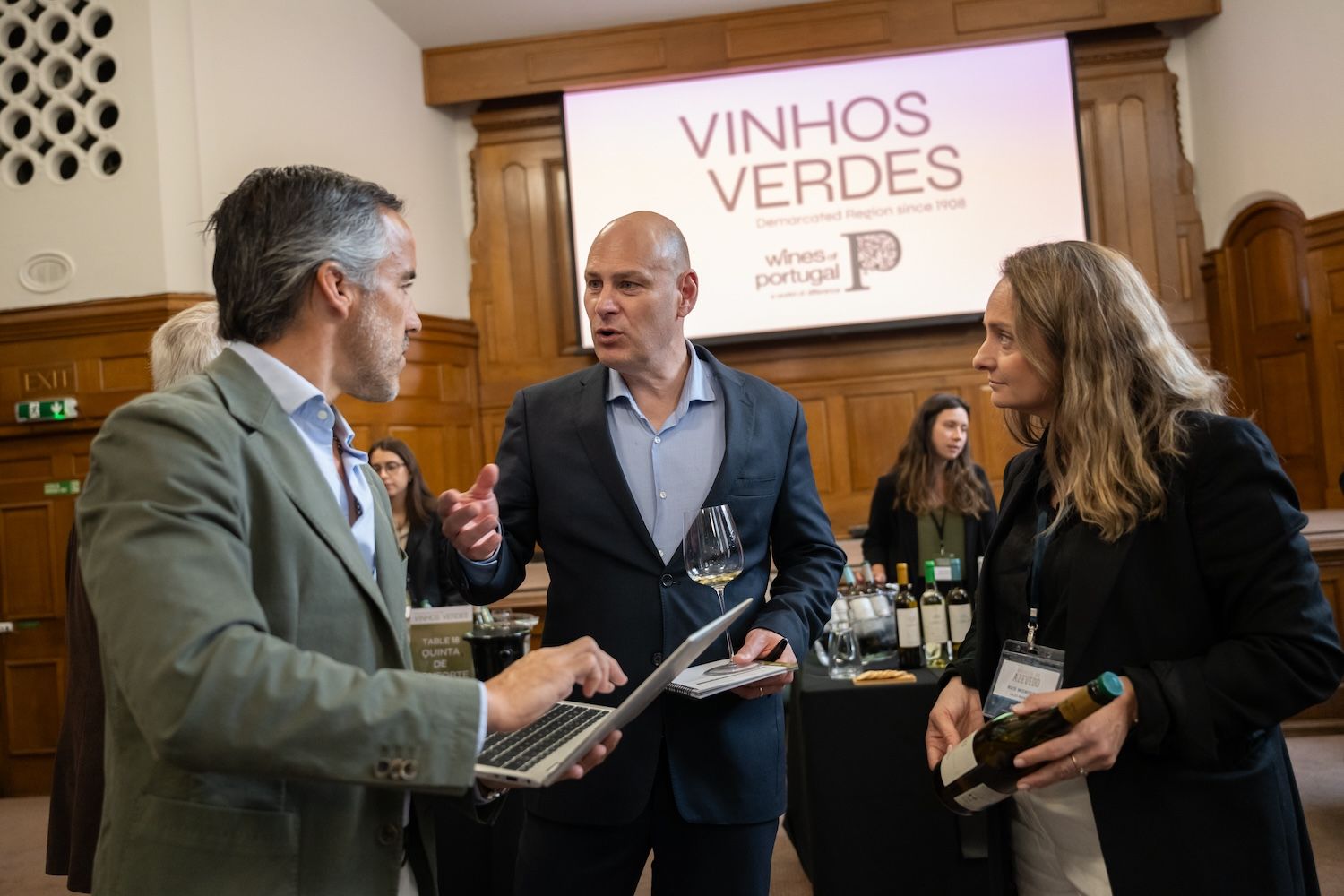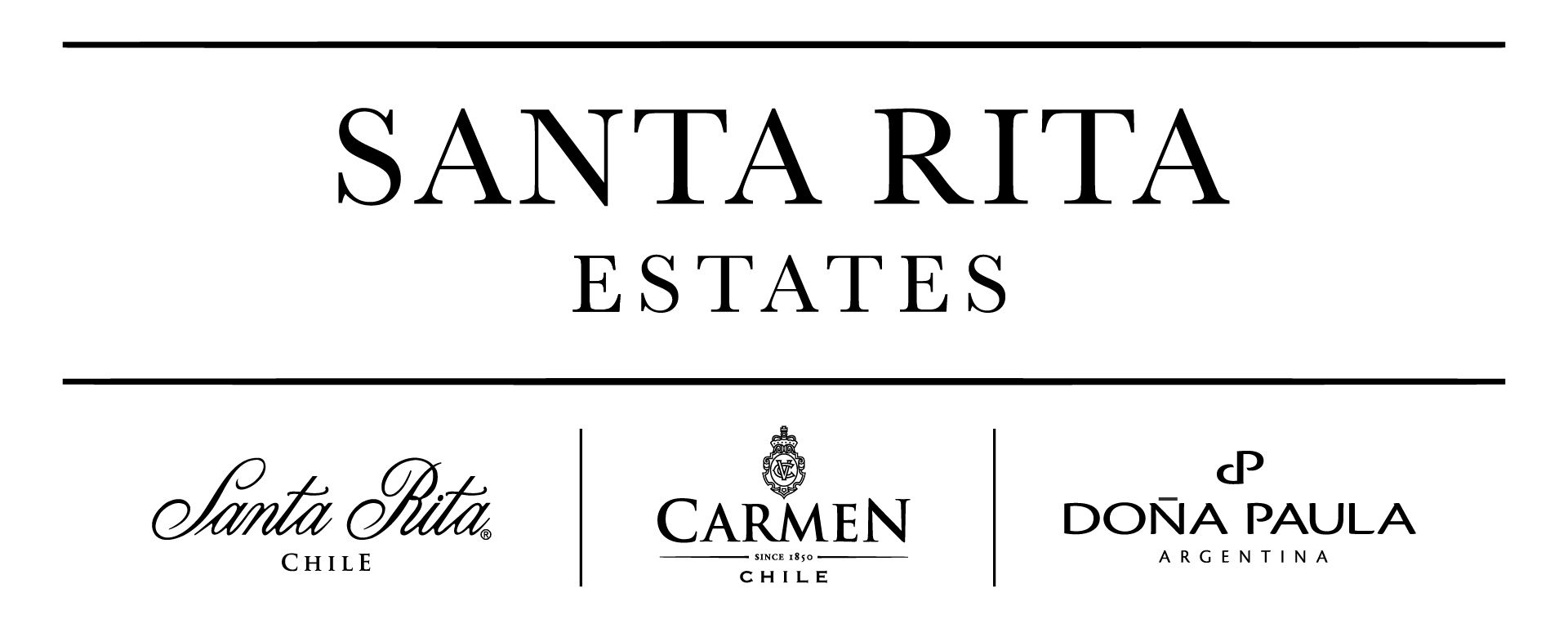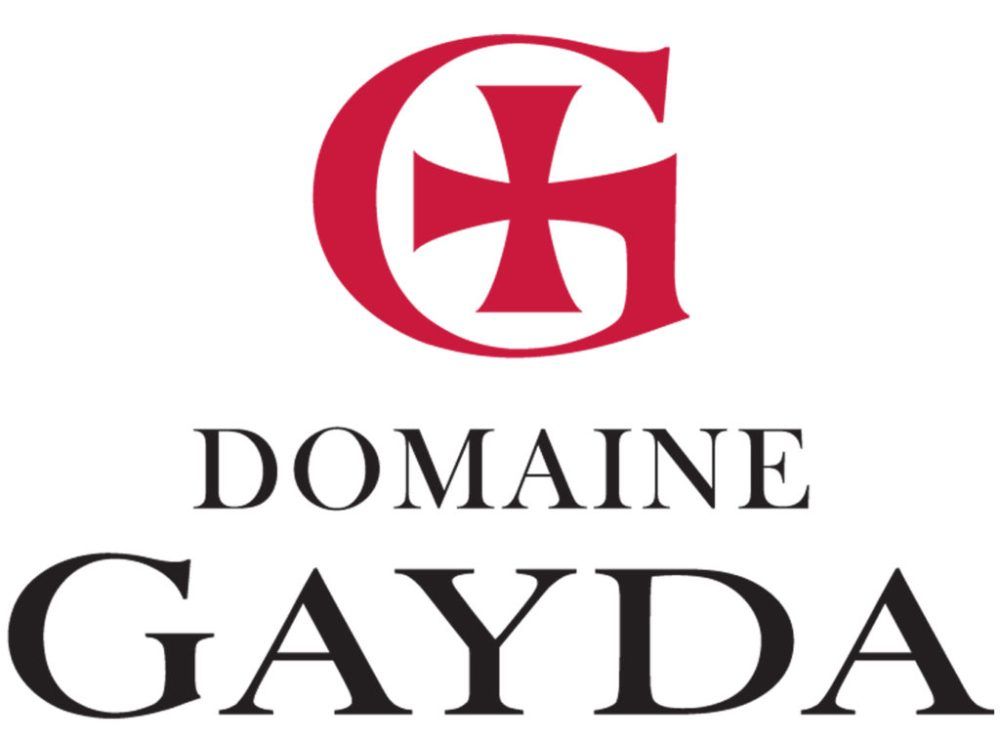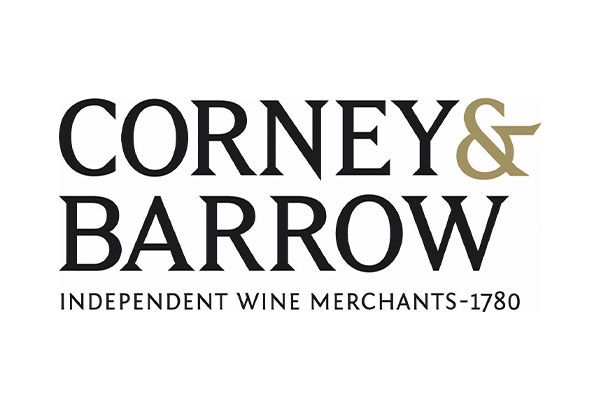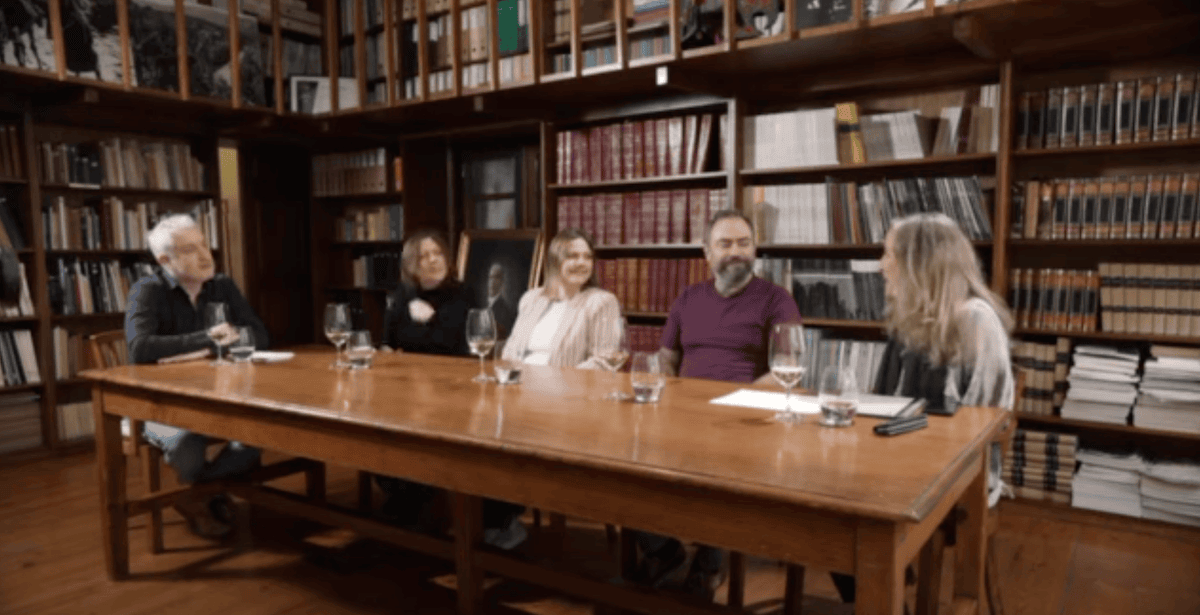While easy-drinking, blended Vinho Verde has been a smash hit in UK supermarkets and grocers, the more serious style of Vinho Verde (wines made from individual grape varieties) has established a presence in independent retail and the premium on-trade largely down to the quality of one permitted variety – the Alvarinho that is produced in the Vinho Verde DOC.
Since it burst onto the scene, with Soalheiro and Anselmo Mendes leading the charge, Alvarinho has been regarded as the jewel of the Minho province and the brightest star in its firmament of grape varieties. A masterclass at the recent Vinhos Verdes tasting in London revealed the depth and character of the grape in the Monção & Melgaço subregion.
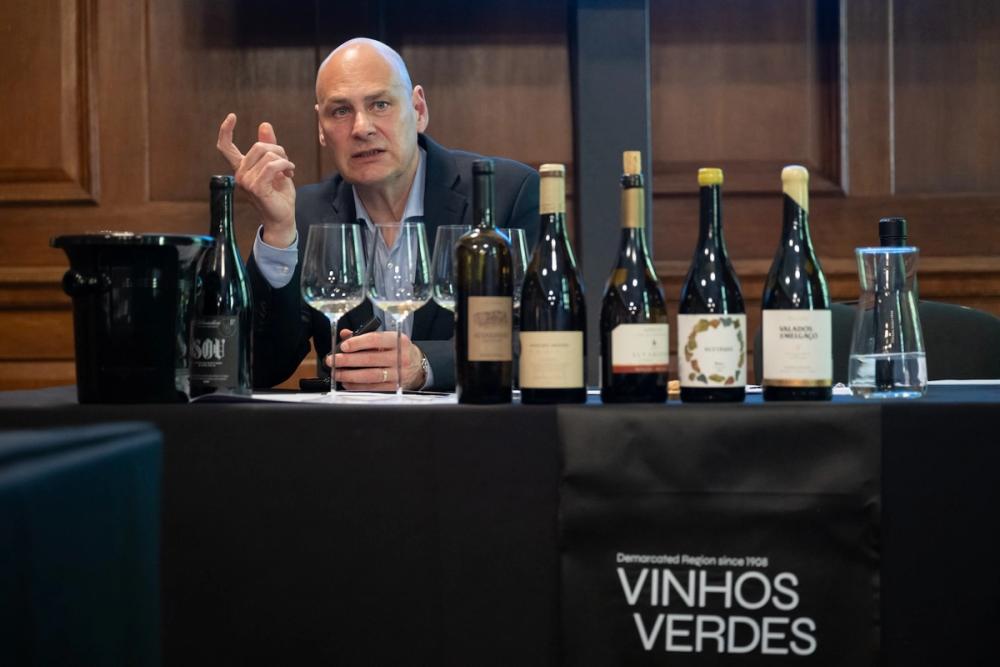
"When we think of Pinot Noir, we think of Burgundy. But Monção & Melgaço is the home of Alvarinho in Portugal." Dirceu Vianna Junior MW
First among equals
The Monção & Melgaço DOC dates back to 1908 and encompasses around 1,800 hectares of vines. With over 2,000 growers, it may not be surprising that Alvarinho is just one of 45 varieties permitted under the Vinho Verde DOC, but it has come to dominate Monção & Melgaço like no other, with over 1,500 hectares now planted.
Originally from the northwest Iberian peninsula, the variety has been grown in the Minho for centuries, although here it takes on a distinctly different style from most Rías Baixas Albariño wines to the north.
Although exciting work is also taking place in the Lima region with the Loureiro variety and in Baião with Avesso, the variety leading the charge in Monção & Melgaço is undeniably Alvarinho.
“When we think of Pinot Noir, we think of Burgundy," Dirceu Vianna Junior MW stated in his masterclass exploring the variety. "But Monção & Melgaço is the home of Alvarinho in Portugal. Alvarinho is Monção & Melgaço."
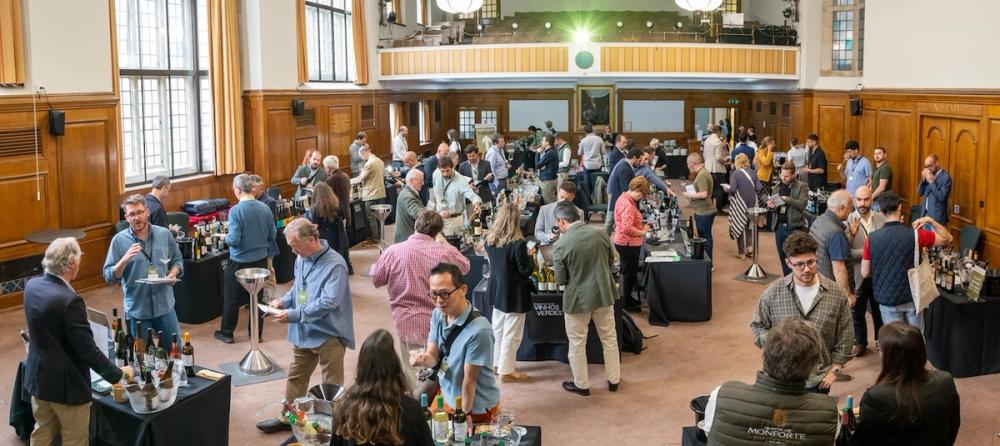
The Alvarinho focus was one of two masterclasses held at this year's Vinhos Verdes London tasting
Redefining expectations
Thanks to a slightly warmer climate, it is not uncommon to see richer, more textured styles emerging here than across the Minho River in Spain. While this may seem at odds with the light and zesty image of most blended Vinho Verde DOC, it is increasingly true of Alvarinho as the region’s flagship grape for premium, varietal wines.
"Alvarinho is low-yielding in both the vineyard and the winery, producing small bunches and less juice," Vianna Junior explains.
According to growers, top-quality Alvarinho requires yields between six and eight tonnes per hectare. The grapes also have thick skins, which contribute structure but can introduce bitterness if not handled carefully. Examples from the lower, more alluvial sites tend to offer more immediate fruit and generosity of body, while those from the poor granite soils at higher elevations offer more linearity and a sharper sense of acidity.
Across both the masterclass and the broader Vinhos Verdes tasting, it was clear that while many wineries continue to produce brisk, steel-fermented Alvarinho, there is growing interest in experimentation – particularly with lees ageing, bâtonnage and oak, often used in combination with each other to build body, texture and complexity.
"Winemakers by definition are always looking to experiment and to do things differently," Vianna Junior remarks. "Alvarinho is versatile and responds well to many winemaking techniques. Lees ageing adds an extra layer of complexity. When combined with bâtonnage, it gives the wine an added dimension and wonderful texture. It also responds well to oak ageing, especially in older barrels or larger vessels. As long as it is not overdone, oak can be a friend to Alvarinho, adding depth through gentle oxidation and conferring excellent texture and complexity."
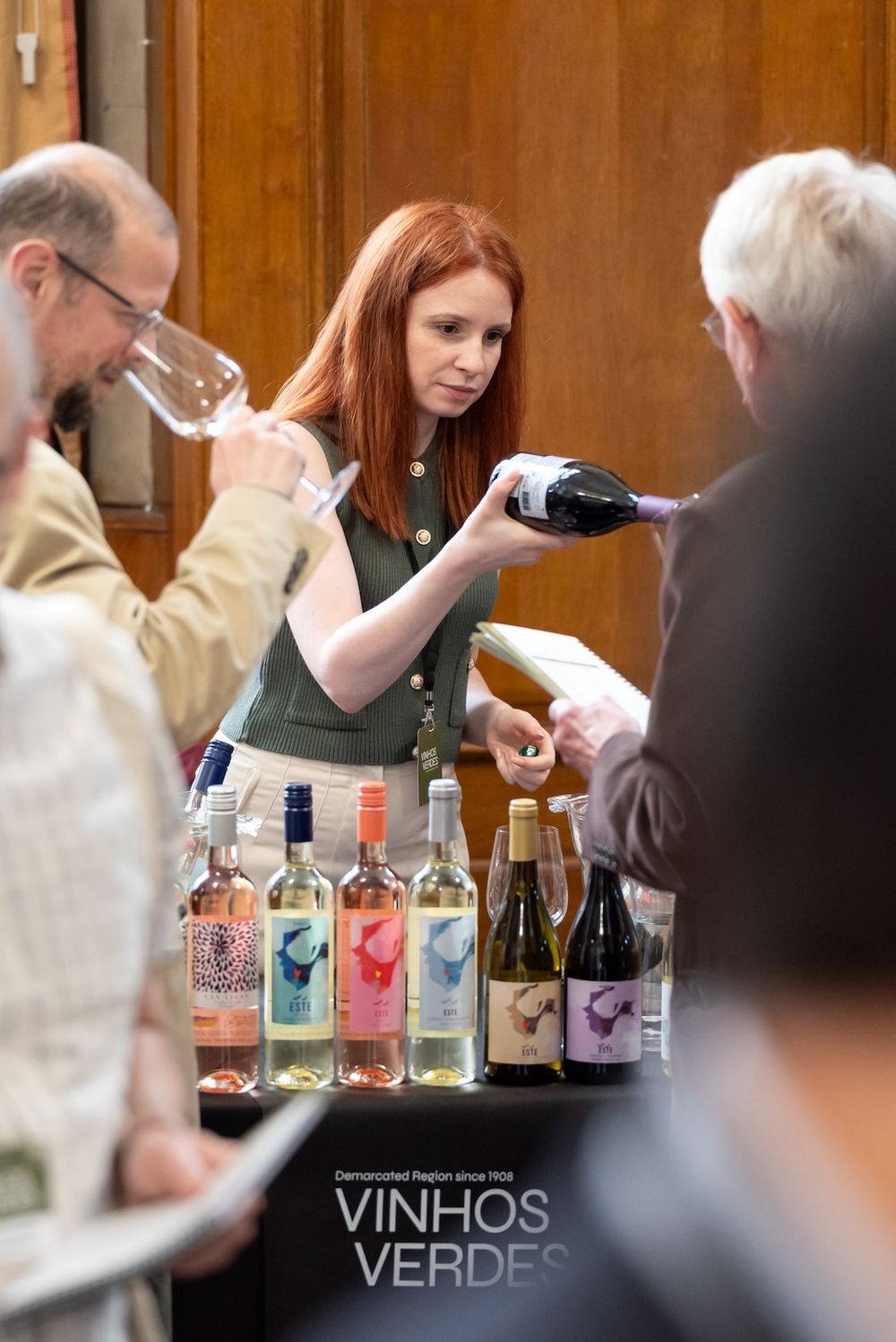
Identity direction
But with so many different winemaking approaches, is there a risk that Alvarinho could lose its market identity? Vianna Junior hopes not. "The grape is versatile, and we should celebrate and enjoy – rather than fear – all the dimensions it can give us, just like Chardonnay."
Looking to the future, while single-vineyard, Burgundian-style expressions are not yet widespread, they are likely to become a more prominent feature of Monção & Melgaço as producers continue to unlock the potential of their vineyards.
There is even some debate around whether a stricter appellation-style system should be introduced. Anselmo Mendes is a supporter, but larger wineries – currently allowed to produce Alvarinho across the Vinho Verde DOC – are less enthusiastic about limiting the name solely to Monção & Melgaço. And while a cru-style system could eventually subdivide the region further, such a development appears unlikely in the short term. "I would be surprised if this happened before the next decade," Vianna Junior says.

Ageing Potential
What has been clear even from the early days is that varietal Alvarinho – even when vinified simply in steel – has enormous potential to age, thanks to its high acidity, considerable extract and innate complexity.
According to Vianna Junior, top-quality Alvarinho from granitic soils can age for 20 to 30 years, developing honeyed, nutty, and dried fruit characteristics. "Aged Alvarinho can rival top Grüner Veltliner or white Burgundy in complexity," he says.
Recommended Alvarinho to buy
Below is a selection of wines to look out for, drawn from both the masterclass and the walkaround tasting, held at Westminster’s Church House. Although most producers are represented in the UK, many of the more ambitious and experimental Alvarinho bottlings are not currently in UK stock. All the wines recommended are 100% Alvarinho.
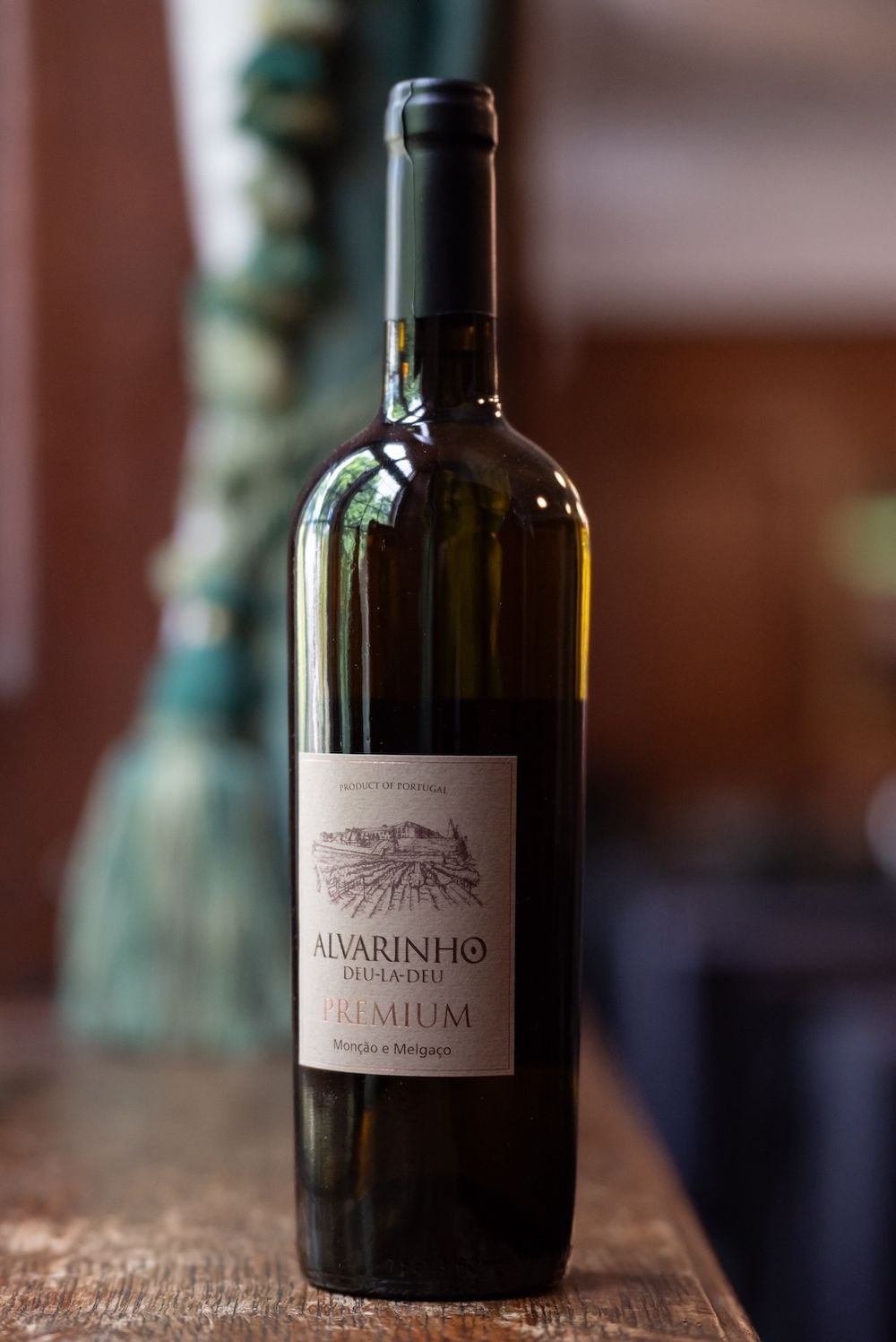
Adega de Monção Deu La Deu Alvarinho Premium 2020
Adega de Monção started with 25 people, but it now manages over 1,720 growers and 1,200 hectares. As Vianna Junior points out, "If you want a textbook Alvarinho, you go here." It still starts very classical – ripe citrus, with green and red apples, fruity but with a tangy acidity – before segueing into a spicy, textured finish. There’s a little oak ageing which adds complexity to the back palate and finish. Quite structured with admirably sophisticated evolution through the palate. 13% abv.
Clark Foyster is the UK agent although this bottling is not currently available in the UK
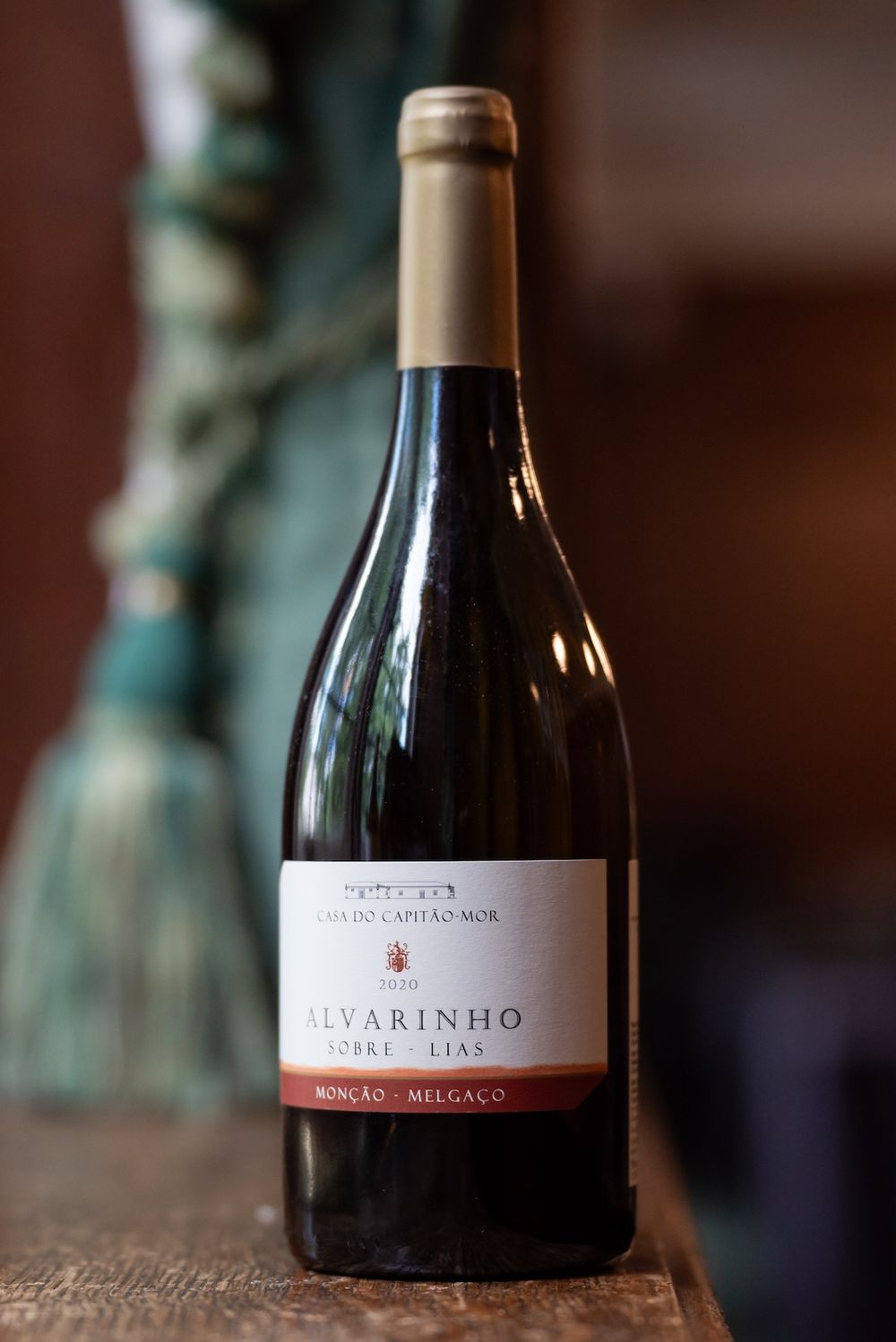
Quinta de Paços Casa do Capitão-Mor Alvarinho Sobre Lias 2020
This Alvarinho spends 30 months on the lees in oak barrels, giving a hugely distinctive style that falls a long way from typical steel-fermented Alvarinho. Here the flavours are of physalis, quince, green peach, ginger, marzipan and fresh orange juice, with some grip and pith on the pleasantly bitter finish. Ambitious and striking, it’s about as far away from the easy, quaffable image of inexpensive Vinho Verde as you can get, and that’s the point. 13% abv.
Seeking distribution

Soalheiro Revirado 2022
Soalheiro’s Revirado is sourced from vineyards on particularly low-fertility granite soils around 400 metres in elevation. There’s no denying that this opens with some pungent reduction, with aromas of pickled onions. But there’s much more to it than that, which is composed around a scintillating acid structure, with a compact and muscular palate with lots in reserve. A little hint of bready lees work adds interest and depth. This is made rather like an old school white Burgundy: pressed to barrel with no settling, fermented slow and dirty with wild yeasts. ‘Revirado’ means stirred or mixed, a reference to the fact that the barrels are rotated regularly during maturation to maximise lees contact. 12% abv.
Raymond Reynolds – although this bottling is not currently in the UK
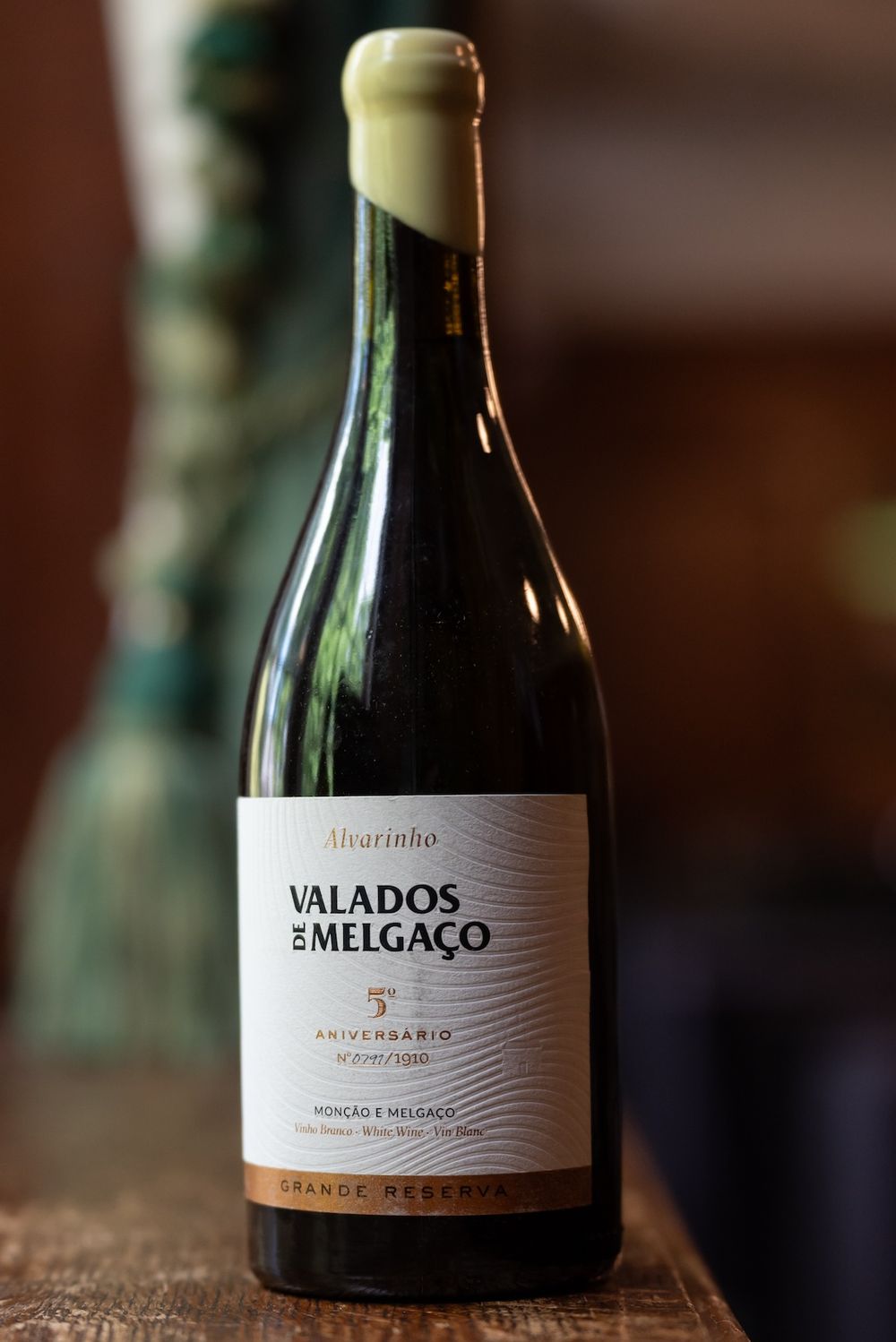
Valados de Melgaço Alvarinho Grande Reserva 5º Aniversário 2016
A late-release Alvarinho that shows how well the variety ages, this opens rich and evolved with a touch of popcorn oak on the nose. It holds on to Alvarinho’s trademark grip and pith, adding rich flavours of lemon curd and lime marmalade in a style reminiscent of bottle-aged Semillon. Very gently pressed and given regular stirring of the lees, there’s also a distinctive florality. Long and persistent with a waxy but fresh finish. 13.5% abv.
Seeking distribution
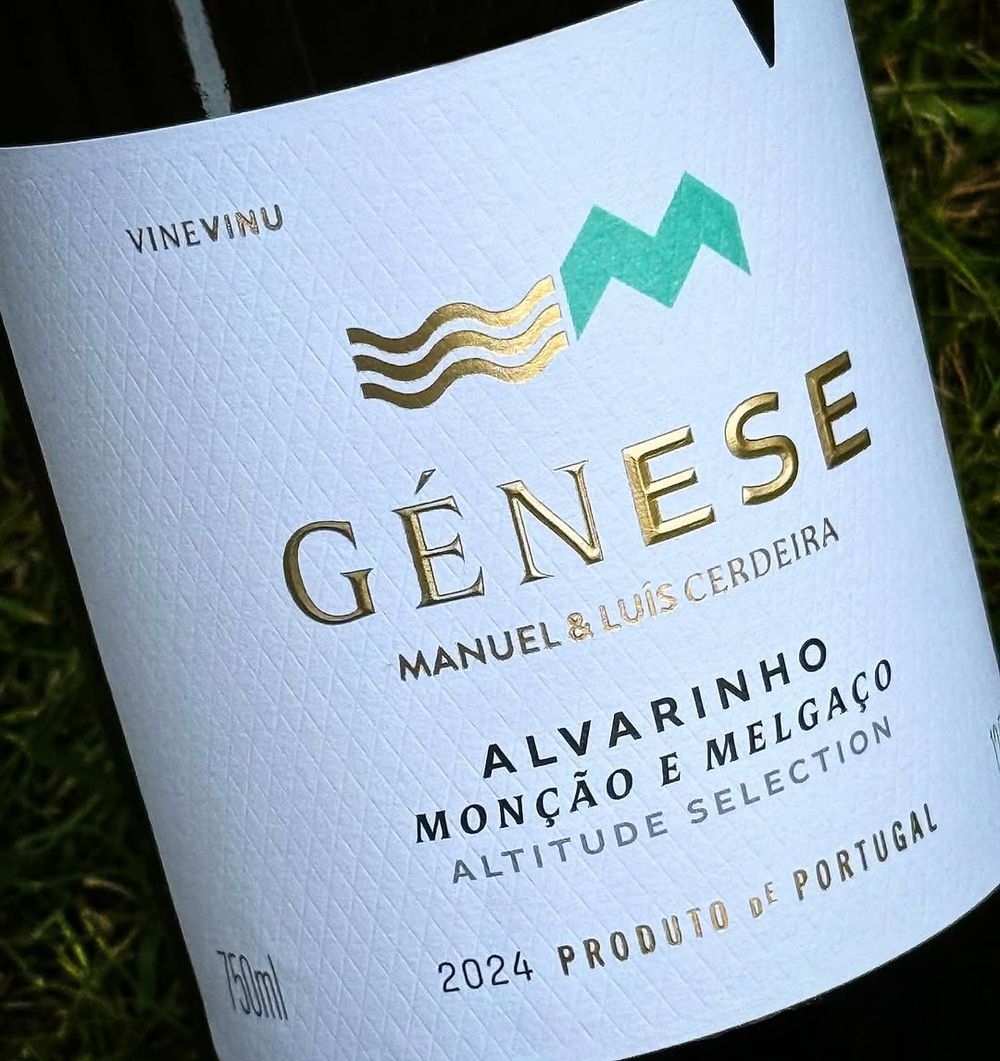
Vinevinu Génese 2024
A new winery from the 2024 harvest, owned by Luis and Manuel Cerdeira, the former the long-standing family winemaker behind regional superstar Soalheiro, which he left after 30 years. A single vineyard wine – "this will be a thing in the future," Manuel, Luis’s son, says – this is precise and pure, from fruit grown at 300 metres elevation and in exceptionally poor granite soils. The palate is taut and steely, but 20% of the wine ages in what the winery call ‘mixtus’ barrels – crafted from multiple types of wood – which add subtle texture. 12.5% abv
Swig – although this bottling is not currently in the UK
